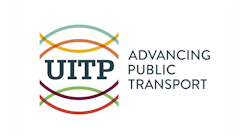New Policy Brief Highlights Public Transport as a Key Actor in Urban Regeneration
A new policy brief from UITP demonstrates that public transport is an instrument in revitalising, regenerating and supporting growth in deprived areas.
The brief, “Public transport as an instrument for urban regeneration”, summarizes that public transport is an essential instrument for urban regeneration as part of a city’s strategy.
Urban regeneration means closing the gap between the wealthiest and poorest populations by improving the physical infrastructure of a deprived pace and increasing access to a city’s life opportunities to tackle social exclusion and support the local economy.
What public transport can do for urban regeneration:
- Play a key role in revitalising and supporting growth in deprived areas
- Improve the physical structures of an area
- Increase access to culture, leisure and more
- Increase healthy active travel and reduce death and injury from road accidents
- Improves access to economic opportunities, jobs, education, culture and more
What actions are needed to address deprivation:
- Involve the community
- Secure funding by linking investment with growth
- Integrated planning to enable effective stakeholder management
“Public transport can play a vital role in not only urban regeneration, but in tackling the deprivation gap that can exist in our cities. This latest policy brief from UITP shows the key role public transport can play in regenerating an area and how improving access for residents is vital. All those with a vested interest in the sustainable development of our cities should consider the recommendations made in this new policy brief," said Hanne Bertnes Norli, market director, Norwegian Railway Directorate, chairwoman of the UITP Transport and Urban Life Commission.
Last week in New York, UITP was invited to participate in the United Nations High-Level Political Forum on Sustainable Development (HLPF), where Sustainable Development Goal 11 was a main topic of discussion.
UITP is committed to working towards the Sustainable Development Goals (SDGs), particularly, Goal 11, which aims to “make cities and human settlements inclusive, safe, resilient and sustainable”.



